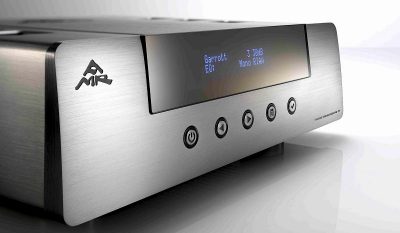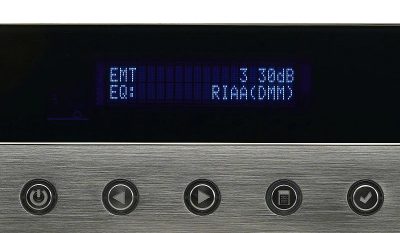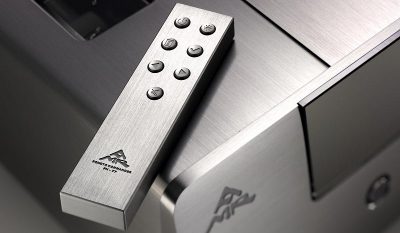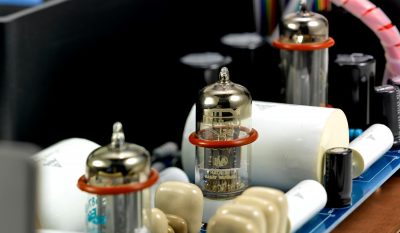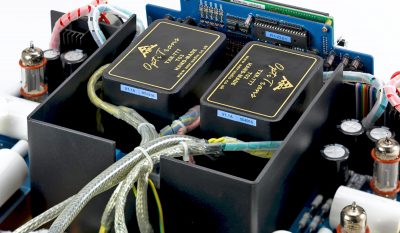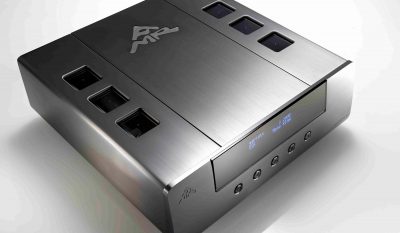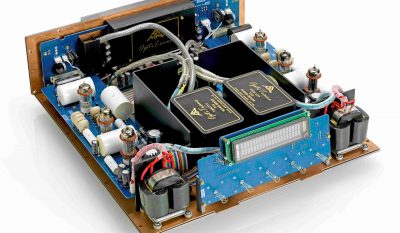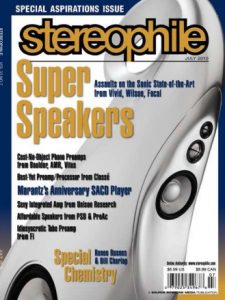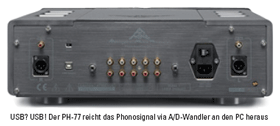Q: How many equalisation curves are available on the PH-77?
The PH-77 has a total of 23 equalisation curves.
Equalisation Curves (Stereo)
- RIAA (Modern stereo LP playback curve)
- Enhanced RIAA (with Vinyl Cutting Lathe HF Roll-Off and Phase-Shift Compensation)
- RIAA DMM – (The RIAA ‘Direct Metal Mastering Curve’ by AMR) Columbia (Columbia LP Stereo)
- Decca FFSS (Decca & London, Deutsche Grammophon, Archiv, Polygram, NAB, Philips, and Argo)
- CCIR (Europe pre ~1962, Eastern Europe & Asia pre ~1975 eg. Amiga, Eterna, Deutsche Grammophon and Melodiya)
Equalisation Curves (Mono)
- RIAA (Mono, also RCA Orthophonic)
- Enhanced RIAA (Mono, with Neumann Cutter HF Roll- Off Compensation)
- Columbia 52 (later Columbia LP Mono)
- Columbia 48 (early Columbia LP Mono)
- Columbia 38 (78rpm, Columbia Electrical post-1938)
- Decca FFRR 53 (also London Records post-1953)
- Decca FFRR 52 (also London Records 1952)
- Decca FFRR 51 (also London Records 1951)
- Decca FFRR 49 (also London Records 1949 -1951)
- RCA 50 (RCA, Urania, Lyrichord)
- RCA 38 (78rpm, RCA Electrical post post-1938)
- AES 51 (1951 AES Standard)
- Bartok LP
- NAB (1942 also NARTB)
- EMI (early EMI Mono LP)
- CCIR 56 (Mono, Europe pre ~1962, Eastern Europe & Asia pre ~1975)
- CCIR 53 (Europe pre~ 1956)
Q: What is the Enhanced RIAA equalisation?
The frequency response of any record cutting lathe will fall at a higher frequency and become less efficient, hence a lower level of high frequency detail was cut into the LP at the time of manufacture.
The Enhanced RIAA EQ is an amendment of the standard RIAA that approximates closely the actual frequency response of the cutting system and compensates for this particular roll-off; bringing the missing level of high frequency detail back into the recording.
Q: If the RIAA equalisation curve was standardised in the 1950s, why are different equalisation curves required?
The simple answer is that as not all LP’s have been equalised using the same RIAA equalisation, additional equalisation curves are needed.At the introduction of the Long Play record (LP) in 1948, most record companies implemented their own particular equalisation curve and continued to experiment with equalisation in order to extract the best performance from the new medium. This led to a baffling array of different and incompatible equalisation curves being applied worldwide.
In the mid-1950’s, most of the record companies agreed to adopt the RCA Orthophonic equalisation curve, the Recording Industry Association of America (RIAA) promulgated this curve as a common standard which became known as the “RIAA equalisation”.
However, as this was essentially an American standard, it had little impact outside of the USA. The RIAA equalisation only became a truly international standard by the mid-to-late 1970’s when European recording labels slowly and finally began to adopt the RIAA equalisation. It was even later when some Asian recording labels joined the bandwagon and adopted the RIAA standard. Right up to the fall of the Berlin Wall in 1989, many Eastern European recording labels (including Russian recording labels) were still, using their own CCIR equalisation.
To further complicate matters, even after officially agreeing to implement the RIAA equalisation curve, many recording labels still continued to use their own, proprietary equalisation, even well into the 1970’s. Columbia is one such prominent example in the USA, Decca/Telefunken/Teldec in Europe is another.
According to Peter Copeland in his excellent “Manual of Analogue Sound Restoration Techniques”:
I consider the whole subject should be a warning to today’s audio industry; practically everything which could go wrong did go wrong, and it isn’t anybody’s fault. But much worse is everyone’s apparent attempts to hide what happened.
Q: What will happen if an incorrect equalisation curve is used for the playback of a particular record?
Of course, no damage will result. However, the true quality of the LP recording will not be fully realised.For example, when played back using RIAA equalisation:
A Decca Stereo LP (UK mastered or pressed – correct equalisation: Decca EQ) or Deutsche Gramophon LP (Germany mastered or pressed – correct equalisation: Decca EQ), will typically sound bright and edgy with a recessed midrange.
A Columbia Stereo LP (correct equalisation: Columbia EQ) will typically sound boomy in the bass, lacking in warmth and body and overly bright at higher frequencies.
A European LP (correct equalisation: CCIR EQ) will sound dull, lifeless and lacking in detail.
Armed with this understanding of how equalisation affects playback, given the considerable investment in an LP collection and an audio system, AMR believes that at the outset, the correct equalisation for each and every LP should not be overlooked as it is just as important as the rest of the playback chain.
Q: How does one determine which equalisation curve is the correct one for a particular LP?
While the notes in the PH-77 User Manual provide informative guidelines, the application of equalisation curves by various different recording labels was in fact, quite inconsistent. Therefore, the final choice really often comes down to listening.
For example
- A 1960’s Decca USA LP, cut and pressed in the USA from master tapes shipped from the UK, would likely have been equalised to the RIAA standard.
- A 1960’s Decca USA LP, cut in the UK but pressed in the USA, even after the introduction of the RIAA standard, is likely to have been equalised to the the Decca UK in-house standard at that time, which is likely to have been Decca FFSS.
Q: Is the RIAA equalisation in the PH-77 of a passive or active type?
In order to attain the absolute best possible sound quality, all the equalisation curves in the PH-77 are purely passive.
Q: Does the PH-77 implement the equalisation curves in the digital domain?
No, all equalisation curves in the PH-77 are implemented purely in the analogue domain.
Q: Why does the PH-77 not use digital equalisation?
The common RIAA equalisation requires low frequencies to be boosted around 20dB and high frequencies to be attenuated by around 20dB. To implement the equalisation in the digital domain, at high frequencies, one would have to remove some 40dB of dynamic range available from the Analogue-to-Digital Converter.
A state-of-the-art 24-Bit Analogue-to-Digital converter will have ~114dB of dynamic range. This means only 74dB of dynamic range is available at high frequencies. That is equivalent to less than 13-Bit actual resolution and correspondingly will result in a much lower level of resolution than the red book CD standard and is in fact, more in-line with the MP3 format.
Q: How comprehensive is the PH-77’s catalogue of 23 equalisation curves?
Very comprehensive, if not totally exhaustive. AMR’s awareness and research into this topic has equipped the PH-77 with a full and comprehensive catalogue of just about every equalisation curve that has ever existed. For a particular LP, information from the PH-77 User Manual and from many available vinyl resources should resolve which EQ curve should be used.
Further, a little known fact is that in many cases, identical equalisation curves existed but were named differently by different recording labels. For example, some small recording labels advertised certain “special” curves such as “New FFRR” and “New NAB” which were in fact, RCA Orthophonic curves.
Q: How did AMR decide which equalisation curves to implement?
The extant literature commonly available features many inaccuracies, errors and omissions. This is made worse by the fact that many authors have simply relayed data from earlier articles containing erroneous data, so the mistakes have been repeated so many times, that they have become the authoritative take on the subject.For example, our research highlighted the prevalence of inaccurate information pertaining to the actual frequency response of several equalisation curves. For example the Decca Stereo EQ (FFSS) has actually a lower turnover frequency of 70Hz, and not 125Hz as erroneously quoted in some cases. In several other cases, ostensibly different equalization characteristics turned out to be different names for the same principle equalisation.
As a result, AMR consulted with a wide range of professionals in the (LP) archiving and transcription fields and used as complete as possible sources in our research, that is best described as audio archaeology. Much of the Knowledge that is still extant exists only in the minds of these professionals, many of which are of advanced age.
The best written compendium on the subject is the late Peter Copeland’s “Manual of Analogue Sound Restoration Techniques”, which contains some 60 pages devoted to the subject of equalisation curves.
Q: How may one tell which equalisation curve to use on a given record?
While label, logo shape, country of origin (of the LP, not the sleeve) and year of issue give some indication, they are NOT 100% reliable indicators. However they usually assist one to narrow down to a short list of equalisation curves that may apply.
To determine which equalisation curve is the correct one, the easiest way is to listen and select the equalisation curve (from a short list of likely ones) that produces the most realistic and natural sound.
Q: Why is there no EMI equalisation curve?
EMI as large international conglomerate even in the 1950’s included many record companies and labels. The equalisation curves used often reflected the practices of the global region (e.g. US, UK/British Empire/Commonwealth, Western Europe).
For example, British (and Empire/Commonwealth) EMI records have in practice matched Decca equalisation in most cases.
Q: Why is there no Teldec equalisation curve?
In 1957 an attempt was made to introduce a German Industrial Standard (DIN) that included record equalisation which matched the CCIR (1956) Standard. This attempted standard has on occasion, been erroneously referred to as the Teldec equalisation. It in fact, should correctly be referred to as either DIN 45533 or CCIR.
Q: What is the CCIR equalisation curve?
In 1957 an attempt was made to introduce a German Industrial Standard (DIN) that included record equalisation which matched the CCIR (1956) Standard.
In Germany and Western Europe the CCIR equalisation curve had mostly been discontinued from use by the mid- 1960’s. However, right up to the fall of the Berlin Wall in 1989, many Eastern European recording labels (including Russian recording labels) were still using the CCIR equalisation.
Some West German records from later years may also be erroneously equalised using RIAA or Decca EQ as the cutting and pressing was often contracted out to East Germany (just like the manufacturing of Siemens, Telefunken and Valvo Electron Valves), where on occasion, the cutting was actually done with CCIR equalisation in place, instead of re-adjusting for the specified RIAA or Decca EQ.
Q: What is the RIAA (DMM) equalisation curve?
In the mid-1970’s Neumann and Teldec developed a new cutting system called Direct Metal mastering (DMM) where the grove was cut directly into a metal foil, not into a lacquer layer.
This eliminated several plating steps in the manufacturing process, allowed for tighter groove spacing and more high frequency level. These differences in the manufacturing process and the different mechanical resonance behaviour of media the groove is cut into (hard metal vs. soft plastic laquer) give DMM records a very different tonality to traditionally manufactured records.
Sonic differences exist even though almost all DMM records have been, to the best of our knowledge, equalised to RIAA standards (excluding East German Amiga/Eterna DMM records and occasional accidents in the East German cutting rooms when undertaking contract work for the West).
The sound from DMM records is often perceived as overly bright and forward. While this is not directly a result of the equalisation employed, the tonality of overly bright DMM records can made more well-balanced or even handed by gently attenuating the upper midrange and lower treble. The RIAA (DMM) curve implemented in the PH-77 is such an implementation.
It is strictly speaking not an international standard (such as RIAA & CCIR) nor a de-facto standard (the Enhanced RIAA curve is an example of a de-facto standard due to the equalisation built into the Neumann Cutting lathes), but rather, a replay adjustment to ameliorate this common sonic shortcoming of DMM records.


